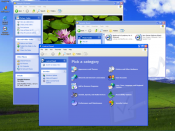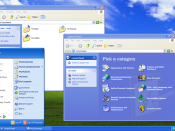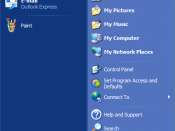The purpose of this paper is to present the financial and business advantages of using Linux, an open source operating system versus Windows XP, a Microsoft closed source operating system, on small business' desktop computers. It is my recommendation that it can be cost effective for a small business to use Linux as its operating system of choice. In the course of my study, I considered the following factors: Cost, performance, reliability, scalability, usability, and security.
Linux is the second most sold and the fastest growing server operating system today (Rapoza). Among those switching to Linux are Amazon.com; Boeing's Research and Development division; Government offices of Jefferson County, CO; the city of Steamboat Springs, CO; and the New York Stock Exchange (Chen). Additionally, Governments of several countries are making the change from Microsoft to the less expensive Linux. Germany, for example, in order to cut costs and improve security, has contracted with IBM to provide computer systems based on Linux (BBC News).
Linux is open-source, its code has been heavily scrutinized. Because of this, bugs are found and fixed much faster than with commercial operating systems and upgrades are released more frequently. (SEUL). This has lead to a less expensive, more reliable, better performing, and more secure operating system with a wide range of suppliers and technical support options. Open-source also means that it can be tailored to meet a small business' individual needs (Rapoza).
While open-source does not mean that Linux is absolutely free, it does mean that it is much less expensive. Commercial distributions of Linux can be purchased along with a support agreement (Irwin). Red Hat, for example, is a Linux supplier that charges a fairly high price for support (Rapoza). Set up cost is normally the biggest expense due to the learning curve with an unfamiliar...


